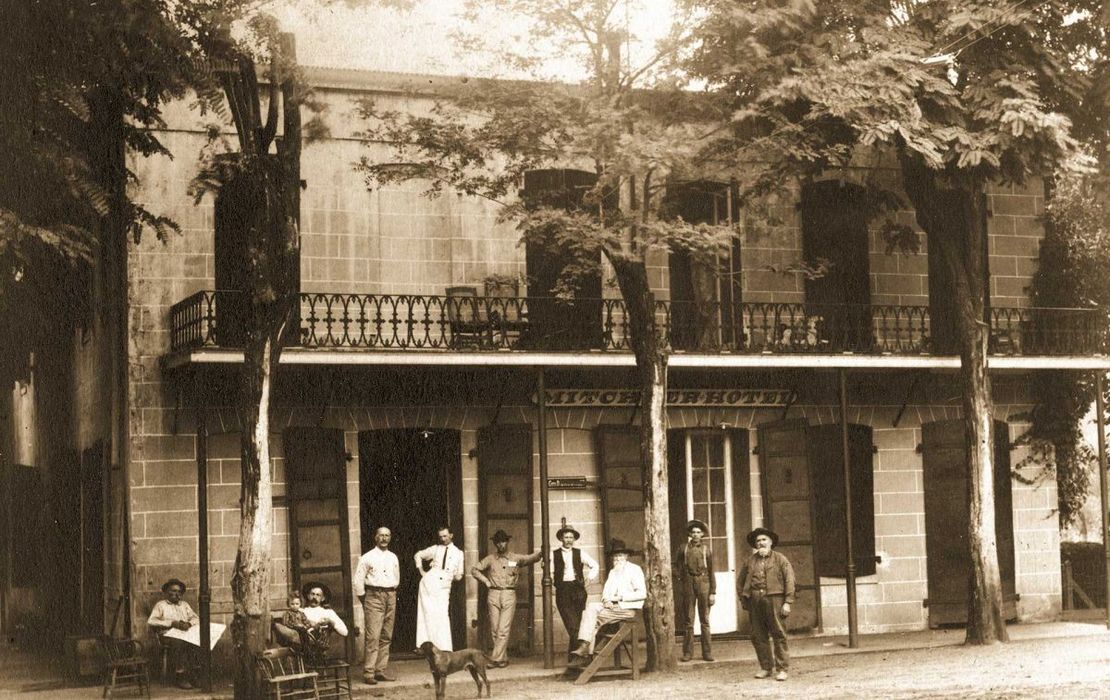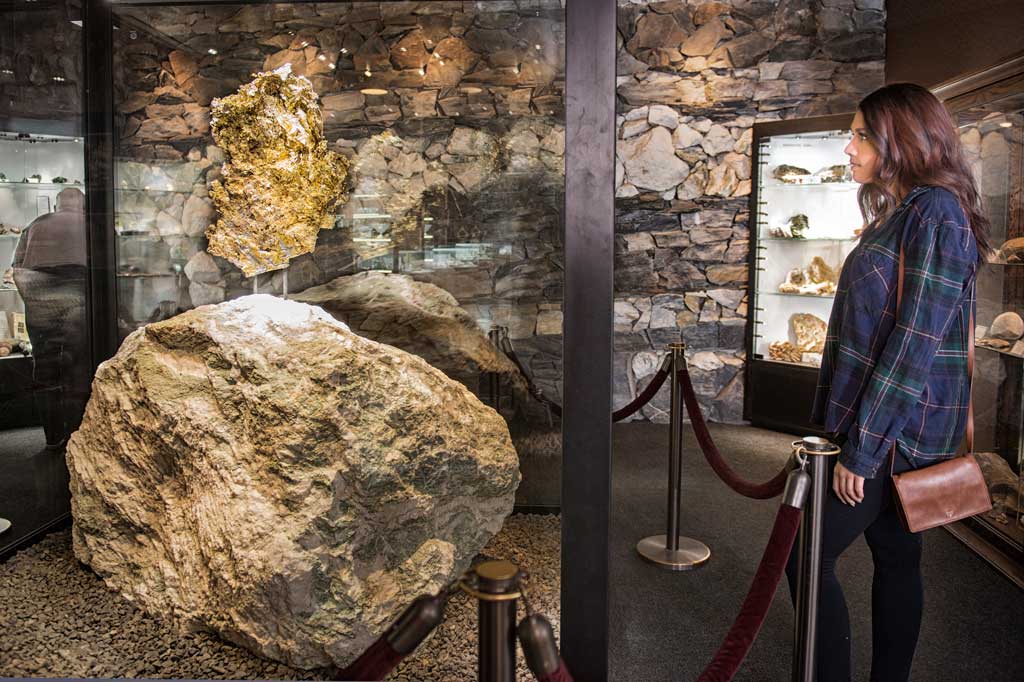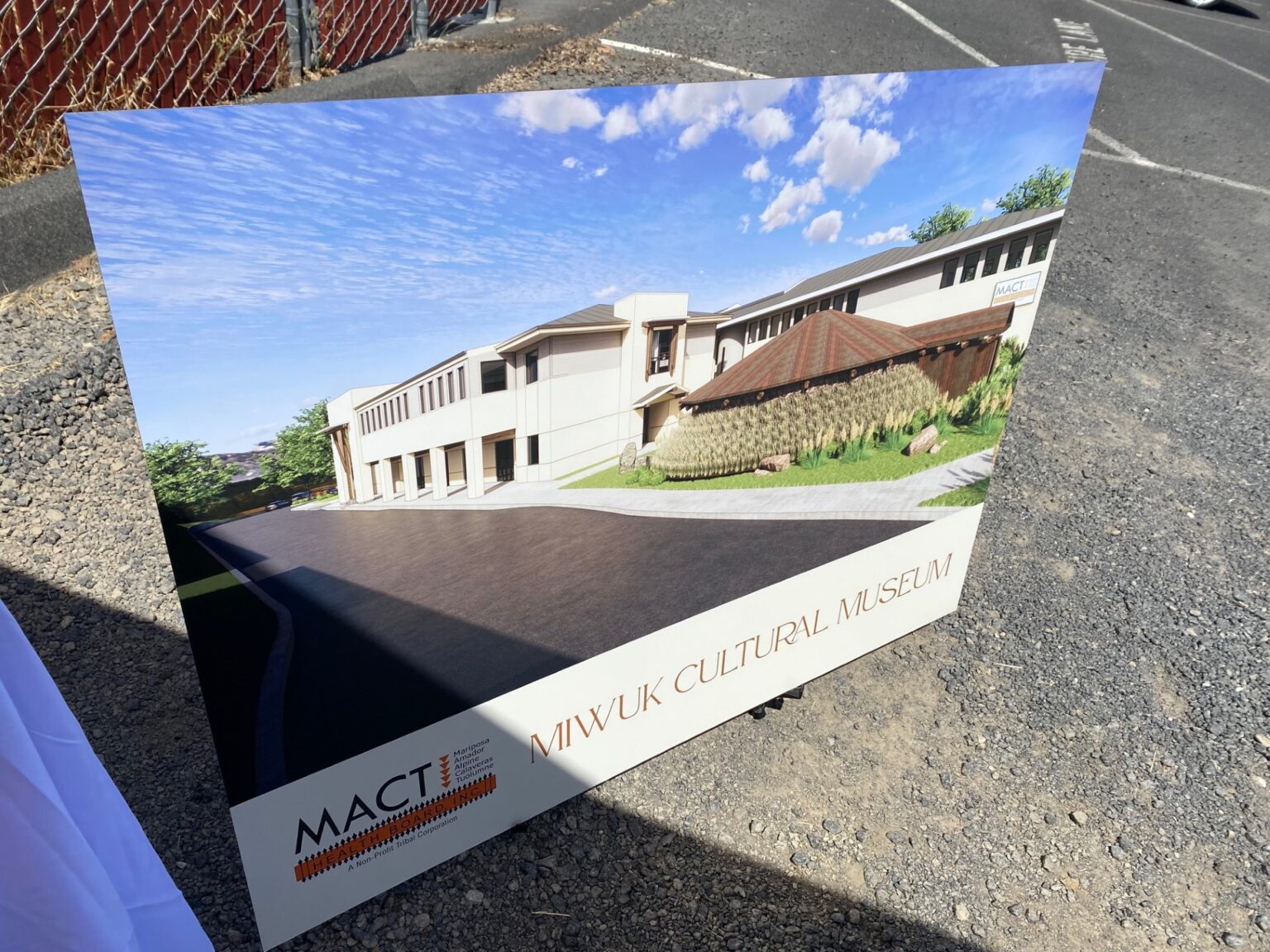Angels Camp, CA…From the days when the land was only inhabited by the Mi Wok people to its rich history anchored in the Gold Rush of 1849 and the 88 days Mark Twain stayed in the area, Calaveras County still harkens back to simpler times, even in the midst of modern progress. In Calaveras, many great strides have been made to continue the important preservation of the area’s history for generations to come. Here is a list of museums to visit to see what life was like back then, so we can continue to look forward:
CALAVERAS COUNTY MUSEUM COMPLEX
30 North Main Street, San Andreas, CA
 Calaveras County Museum Complex, historic San Andreas | Lisa Boulton
Calaveras County Museum Complex, historic San Andreas | Lisa Boulton
The Calaveras County Museum Complex includes the original, historic county courthouse, jail yard and Hall of Records. It includes the upstairs portion of the Odd Fellows and Masonic Hall built in 1856. The museum contains displays dating to the Gold Rush era including information on the famous outlaw, Black Bart, the “Gentleman Bandit” who was jailed and tried here when he was finally captured in 1888. Their outstanding Mi Wok Indian exhibit includes artifacts, photos and quotes revealing the ancient Mi Wok lifestyle. They also have an extensive exhibit showing the history of the Chinese people coming to Calaveras during the Gold Rush.
Researching your family’s history in Calaveras County? Friendly, helpful staff at the Historical Society’s office, located on the lower floor of the Hall of Records, are happy to help you during their regular hours.
ANGELS CAMP MUSEUM
753 South Main Street, Angels Camp, CA

Angels Camp Museum carriage house
Home to one of the largest collections of carriages and wagons in the nation, Angels Camp Museum is an international destination with more than 30,000 square feet of exhibits on Gold Rush history. Visitors can stroll through the beautifully landscaped historical park to explore extensive indoor and outdoor exhibits that include a doctor’s office and Mark Twain Exhibit, Ranching and Mining exhibits, and the new Frog Jump History exhibit.
Continuing through the museum, visitors will find two steam traction engines, an overshot waterwheel in its original location, a hydraulic monitor, drills, ore cars and even a working model of a famous stamp mill. Also, check out one of the oldest and best preserved little red schoolhouses in the state, the Altaville Schoolhouse, just down the road from the Angels Camp Museum.
The museum offers guided tours for groups 10 to 60 people with reservations. Bring your lunch and enjoy a picnic under native oak trees of China Gulch where the ’49ers prospected for gold. Stop by the gift shop for one-of-a-kind souvenirs including a copy of Mark Twain’s infamous story ‘The Celebrated Jumping Frog of Calaveras County.’
SIERRA LOGGING MUSEUM
2148 Dunbar Rd., Arnold, CA
Sierra Nevada Logging Museum | Dave Jeffords
Situated at one end of beautiful White Pines Lake, the Sierra Nevada Logging Museum gives a fascinating look into the history and importance of logging in the Sierra Nevada Mountains. Creative exhibits bring this history to life and honor those who lost their lives in the industry. Many hard working volunteers deliver the best logging museum experience by conveying the history of the logging and lumbering industry as it evolved in the Sierra Nevada Region since the mid 1800s before the discovery of gold to the present day.
The Sierra Nevada Logging Museum’s seven-acre site sits on property originally occupied by the historic logging and mill workers’ camp of the Blagen Lumber Company (1938-1962). The heavily forested hillside above White Pines Lake (elevation 4,000 feet) offers a beautiful backdrop of the museum. Ample parking is available, and the site is accessible year-round, although a heavy snowfall may leave it isolated for a couple days. The museum is closed in the winter months depending on snow levels, however give them a call to see if a private tour can be arranged.
Enjoy the museum’s annual Logging Jamboree, one of the most fun and interesting events in Calaveras County. This annual event is great for the entire family. And, while you’re in the area, enjoy White Pines Lake and the Arnold Rim Trail.
CALAVERAS BIG TREES VISITOR CENTER AND MUSEUM
1170 East Highway 4, Arnold, CA

Calaveras Big Trees State ParkThe museum in the Visitors Center @ Calaveras Big Trees State Park
There is a wonderful museum tucked just inside the Calaveras Big Trees Visitor Center. Several native forest animal displays and hands-on exhibits make this educational experience lots of fun. See a 400 pound black bear up close, learn about the first recorded Miwok to walk this forest, and discover how logging and fires help and hurt this extraordinary ecosystem .
IRONSTONE HERITAGE MUSEUM
1894 Six Mile Rd., Murphys, CA
The Ironstone Heritage Museum was established as a tribute to the historic California Gold Rush era and the Mi Wuk people who inhabited the area before the mass influx of mining hopefuls. The Gold Rush collection includes photos, mining maps and personal artifacts including letters written by miners to friends and family back home giving an intimate peek into what life was really like for these 19th century adventurers.
The centerpiece of the museum is Ironstone’s Crown Jewel, the world’s largest piece of crystalline gold. At 44 lbs troy (16.4 kg), it is substantially larger than the Fricot “Nugget” (13.8 lb troy; 5.15 kg) and the Whopper (11.7 lb troy; 4.37 kg), the next two largest specimens. The “Gold Pocket”, as it has come to be known, is 98 percent pure, making it a specimen of exceedingly high quality and value. Sixty-three pounds before preparation, it spent almost a year in an acid bath washing away most of the surrounding matrix to ultimately reveal the forty-four pound specimen that is on display at the winery. The stone entrance to the crystalline gold display is reminiscent of an early “forty-niners” gold mine with its massive stone face and broad beam construction.
The Heritage Museum also features a vast display of natural gold specimens acquired from modern-day prospectors who are still very active in the Sierra Foothills. Visitors to the museum can purchase a wide variety of books and educational materials, as well as artifacts and souvenirs related to the Gold Rush era. In addition, carefully selected jewelry is available for purchase in their jewelry shop within the museum, including treasures such as gold-in-quartz jewelry, natural gold nuggets and nugget jewelry, as well as an impressive collection of diamond, emerald, turquoise and other precious and semi-precious gem artistry.
THE RED BARN MUSEUM
891 Mountain Ranch Rd., San Andreas, CA

The Red Barn Museum | Lisa Boulton
The Red Barn Museum is housed in the former dairy barn of the old County Hospital and stands proudly as a dominant landmark along Mountain Ranch Road in San Andreas. The facility showcases Calaveras County’s rich history in agriculture, mining, logging, and ranching. Each display is a collection of traditional local tools of various trades like blacksmith or butcher and include actual mining carts, farm wagons, and other donated objects. The displays incorporate fun interactive pieces. The Red Barn Annex houses additional artifacts including the restored 1800s Hook and Ladder. Stop by the Calaveras County Museum first for admission to The Red Barn Museum.
COMING SOON: M.A.C.T’s Mi-Wuk Cultural Museum
Photo courtesy of Mymotherlode.com
Ground has broken in Angels Camp for the Miwok Cultural Museum that will be housed in the new M.A.C.T. (Madera, Amador, Calaveras, Tuolumne) Administration building. Noted in a June 6, 2023 My Motherlode news article about the new museum, “…the idea of the museum started about 16 years ago when the healthcare group was contacted by the family of Dr. Cooper of Angels Camp who would receive baskets from many Miwuk people as a form of payment back in the sixties”. M.A.C.T.’s Executive Director John Alexander told MyMotherlode.com that the Miwok people did not have money to pay for doctor’s services, so they paid with baskets. Dr. Cooper kept the baskets along with the stories of the people who made them and gave them to him. Read more about the Mi-Wuk people at CalaverasHistory.org, and stay tuned for more updates!







